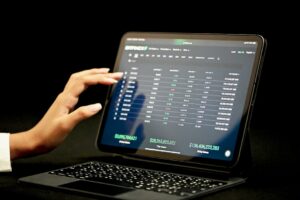From Practice to Real Trading: Tips for Transitioning Successfully in Forex
Forex trading, also known as foreign exchange trading, has gained popularity in recent years. The allure of potentially high profits and the ability to trade 24 hours a day have attracted many individuals to this exciting market. However, transitioning from practice trading to real trading can be a challenging endeavor. In this article, we will explore some essential tips to help you successfully make the leap into real trading.
1. Develop a Trading Plan:
Before you start real trading, it is crucial to have a well-defined trading plan. This plan should outline your trading goals, risk tolerance, trading strategies, and money management rules. A trading plan acts as a roadmap, helping you navigate the ups and downs of the forex market with discipline and a clear focus.
2. Start Small:
When transitioning from practice to real trading, it is advisable to start with a small trading account. This allows you to get a feel for the real trading environment without risking significant capital. It is essential to remember that real trading involves emotions and psychological aspects that practice trading cannot fully replicate. Starting small helps you manage the psychological pressures that come with real trading.
3. Manage Risk:
Risk management is one of the most critical aspects of successful forex trading. Before placing a trade, determine your risk tolerance and set stop-loss orders to limit potential losses. It is crucial to avoid overleveraging your trades, as it can lead to substantial losses. As a general rule, do not risk more than 1-2% of your trading capital on any single trade.
4. Embrace Emotional Discipline:
Real trading can be emotionally challenging. The fear of losing money or the excitement of making profits can cloud your judgment and lead to poor trading decisions. Emotional discipline is the ability to stick to your trading plan and make rational decisions based on analysis rather than emotions. Developing emotional discipline takes time and practice but is crucial for long-term success in forex trading.
5. Be Realistic:
It is essential to have realistic expectations when transitioning to real trading. While practice trading can yield consistent profits, real trading involves real money and real emotions. It is unrealistic to expect to become an overnight millionaire through forex trading. Instead, focus on consistent growth and continuous improvement. Set achievable goals and be patient with the learning process.
6. Learn from Your Mistakes:
Mistakes are an inevitable part of forex trading, especially when transitioning to real trading. Instead of being discouraged by losses, view them as valuable learning opportunities. Take the time to analyze your trades, identify any mistakes, and learn from them. Keeping a trading journal can be highly beneficial in this regard. By documenting your trades and reviewing them regularly, you can identify patterns and refine your trading strategies.
7. Continuously Educate Yourself:
Forex trading is a constantly evolving field. Stay updated with market news, economic indicators, and technical analysis techniques. Continuously educate yourself through books, online courses, webinars, and forums. Surround yourself with experienced traders who can offer valuable insights and mentorship. The more knowledge and skills you acquire, the better prepared you will be to navigate the forex market.
In conclusion, transitioning from practice to real trading in forex requires careful planning, risk management, emotional discipline, and continuous education. By developing a trading plan, starting small, managing risk, embracing emotional discipline, setting realistic goals, learning from mistakes, and staying informed, you can increase your chances of success in the forex market. Remember, patience and perseverance are key as you embark on this exciting journey.






